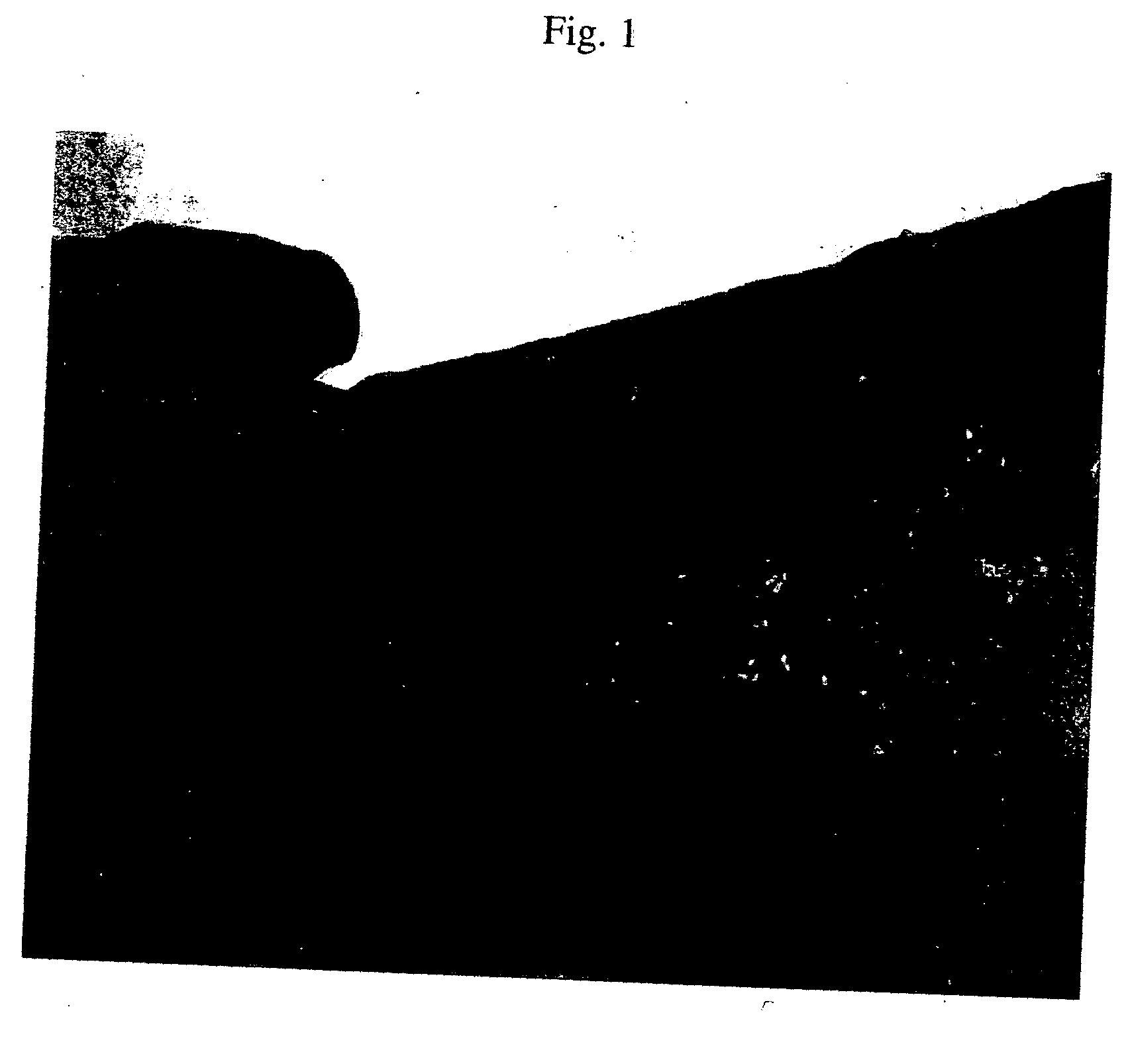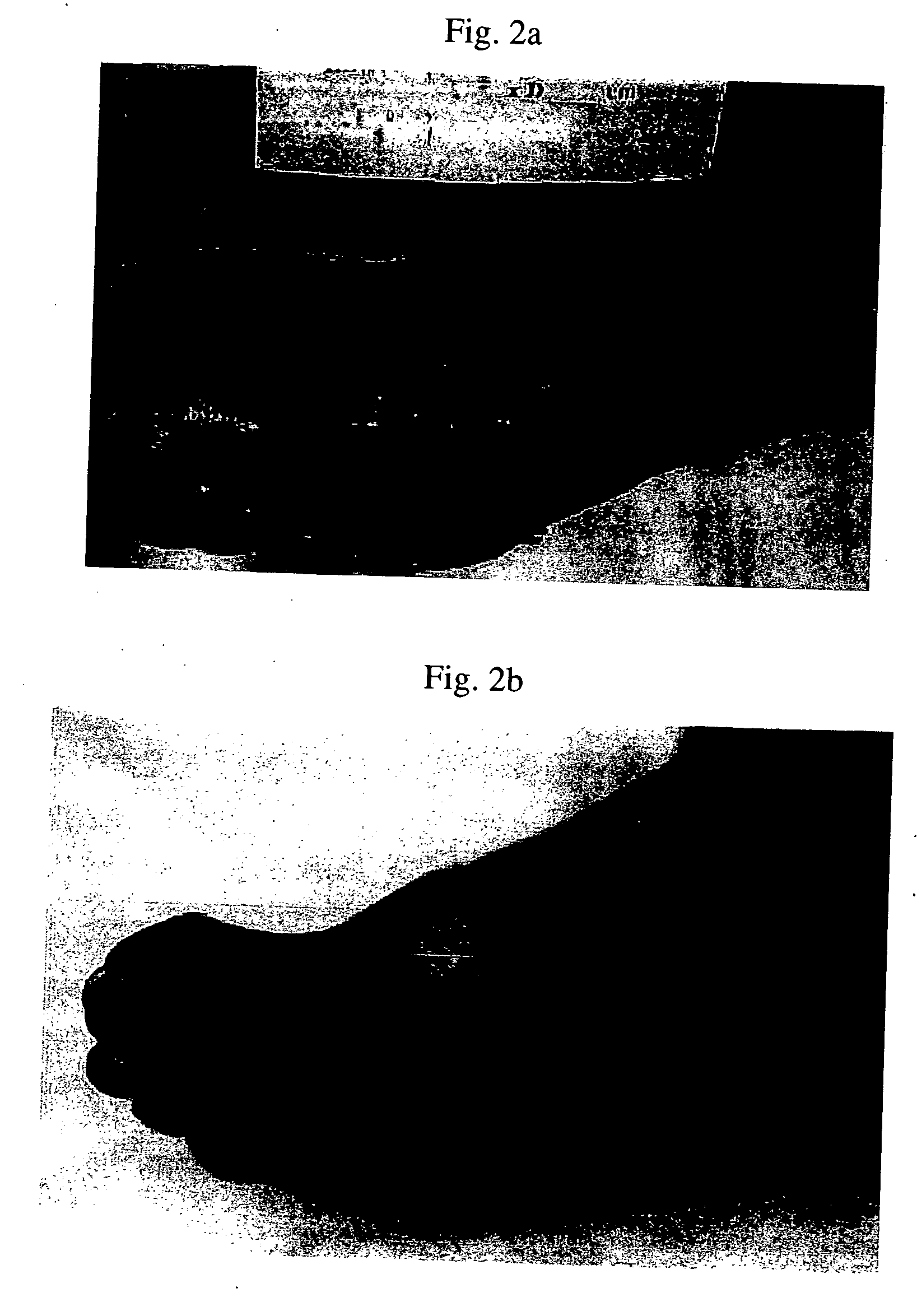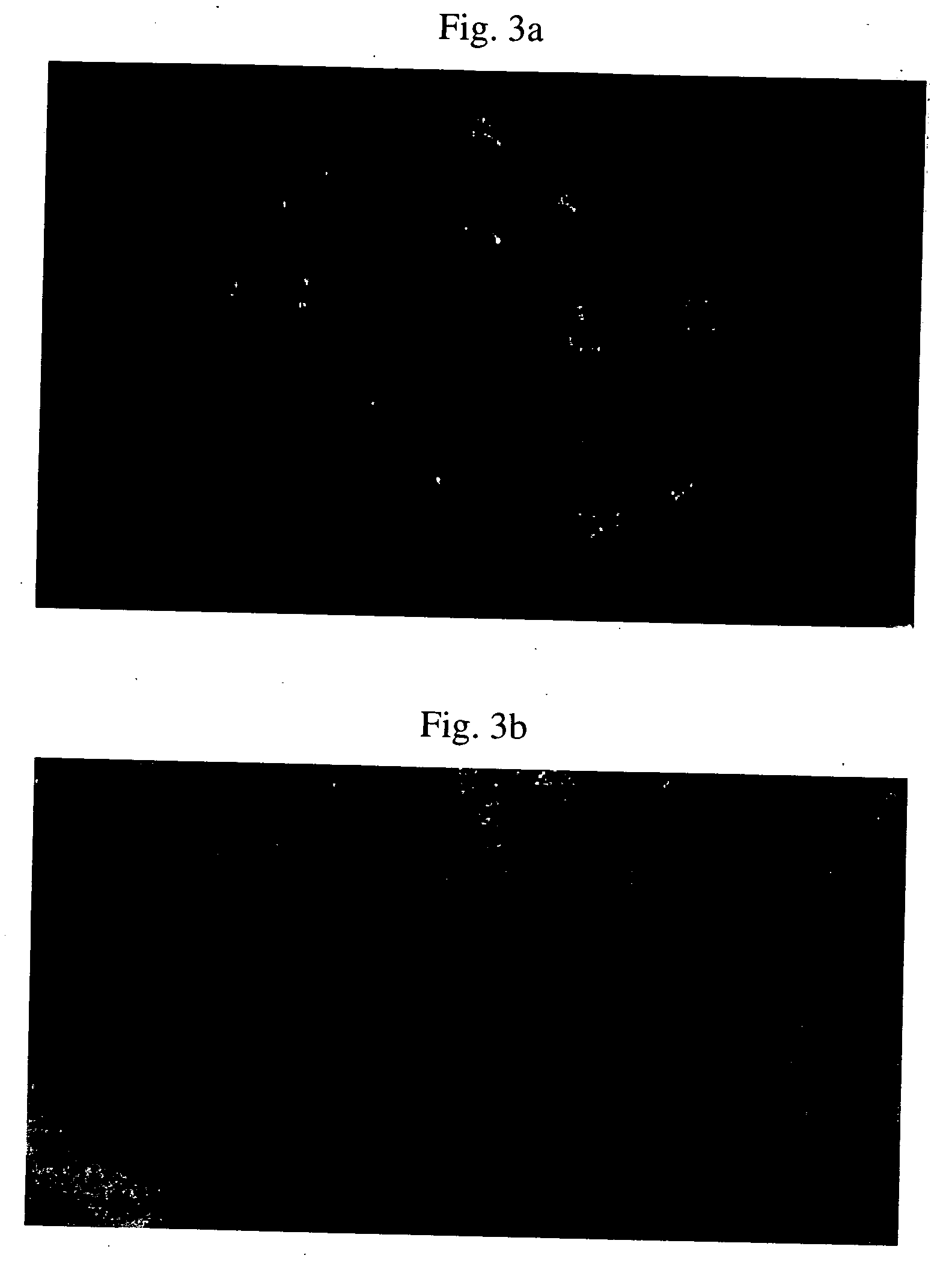Compositions for disrupting and inhibiting reconstitution of wound biofilm
a biofilm and composition technology, applied in the direction of drug compositions, aerosol delivery, transferrins, etc., can solve the problems of chronic wound care, several billion dollars in direct medical costs, and chronic wounds are increasingly significant medical problems, and achieve the effect of facilitating topical administration of mdpp-a
- Summary
- Abstract
- Description
- Claims
- Application Information
AI Technical Summary
Benefits of technology
Problems solved by technology
Method used
Image
Examples
example 1
[0055] The Southwestern Regional Wound Care Center (Lubbock, Tex.) provided 50 samples from patients with chronic wounds. In addition, 15 patients with acute wounds less than 24 hours in duration were biopsied and their wound beds examined. The wound samples were evaluated using Gram staining and scanning electron microscopy.
[0056] The Gram stains of the chronic wounds indicated that there were multiple species of bacteria. Also, bacteria tend to penetrate deeply into intact tissue with capillaries present, and there was quite a bit of amorphous material surrounding the bacteria. Under scanning electromicroscopy there appeared to be organized biofilm with extracellular polymeric substance adhered around colony bacteria in at least 60 percent of the chronic wounds.
[0057] The same methodology was used to evaluate 15 acute wounds. Only one of the 15 wounds was found to have biofilm. All of the acute wounds that were sampled were healed in two to three weeks, indicating no impairment ...
example 2
[0059] A 62-year-old diabetic white male had developed severe peripheral neuropathy and peripheral vascular disease. He presented with the wound necrosis of his left great toe pictured in FIG. 1a with the infection tracking down the flexor tendon of his foot into the heel. He had very poor vascular status. This qualifies as a Wagner's V classification diabetic foot ulcer. The patient was very malnourished and had very difficult to manage diabetes, with blood glucose out of control (over 400) during the first 12 weeks of management.
[0060] This gentleman underwent debridement on a once weekly basis, removing necrotic tissue including bone down to healthy bleeding bone. He had IV antibiotics daily for the first eight weeks and daily dressing changes for the first four weeks and then on Monday, Wednesday, and Friday thereafter. The initial dressing changes comprised lactoferrin and a commercially available gel (Curasol® Hydrogel Wound Dressing, Healthpoint, Ltd.) along with Acticoat® (...
example 3
[0061] A 62-year-old Latin American male experienced diabetic foot ulcer of the left foot that began with trauma to his great toe and quickly eroded into the mid foot. The patient had extensive necrotic damage throughout the forefoot with tracking into the hindfoot consistent with a Wagner's V classification. The wound had begun with trauma, and infection was established in the great toe. Wound care, including IV antibiotics, local debridement, anti-biofilm agents and specific biocides to manage the surface, had been instituted to stop the spread of infection. Wound care was performed on a daily basis, yet the wound died back into the mid portion of the foot, as shown in FIG. 2a.
[0062] Lactoferrin therapy was instituted and the patient responded fairly quickly. Within several weeks, the progressive necrosis of the wound abated. The wound bed became granular with texture and color consistent with that of a healing wound. The drainage, pain and swelling in the left foot resolved. Sev...
PUM
| Property | Measurement | Unit |
|---|---|---|
| molecular weight | aaaaa | aaaaa |
| area | aaaaa | aaaaa |
| composition | aaaaa | aaaaa |
Abstract
Description
Claims
Application Information
 Login to View More
Login to View More - R&D
- Intellectual Property
- Life Sciences
- Materials
- Tech Scout
- Unparalleled Data Quality
- Higher Quality Content
- 60% Fewer Hallucinations
Browse by: Latest US Patents, China's latest patents, Technical Efficacy Thesaurus, Application Domain, Technology Topic, Popular Technical Reports.
© 2025 PatSnap. All rights reserved.Legal|Privacy policy|Modern Slavery Act Transparency Statement|Sitemap|About US| Contact US: help@patsnap.com



